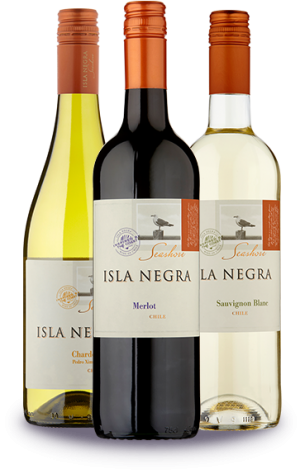Analysis: Top 10 UK wine brands

By Richard Siddle
The wine industry is often criticised for not having created real genuine brands that consumers can identify with as other drinks categories have. Too often, the argument goes, brands are built on the back of promotions and deals rather than any genuine brand credentials.
Champagne apart, how many wine brands carry the same layers of brand equity as say a top gin, vodka, whisky, brandy or rum?
Yes, the likes of Gordon’s, Smirnoff and Bacardi are on offer as often as any of the UK’s top 10 wine brands. But the key difference is they are supported by such high profile above the line advertising campaigns that people will actually specifically request them when ordering a drink.
How often will we specifically ask for a Hardys, or a Casillero del Diablo when ordering wine at a bar, even though they are backed by multi-million advertising campaigns?
This week’s release of the annual performance of the UK’s top 10 wine brands by research house, IRI, shows there are clear winners and losers in the branded wine market.
The big winner is Gallo’s Barefoot, up 37.4% in value sales to £107.3m, a big jump from £78m in 2015. What’s more, its average price point is above the national average of just over £5 at £5.79. Arguably even more impressive is the 33.9% increase in value sales of Concha y Toro’s Casillero del Diablo from Chile, with sales of £120.2m. It also had the highest average price point of £6.13. The other big mover was Australia’s Yellow Tail, which might be 10th in the Top 10, but it enjoyed a 33% increase in value sales to £85.8m.
What is particularly interesting about the UK’s top ten wine brands is how many of them are now bottled in the UK. That’s a lot of wine, which is being shipped in vast quantities and then bottled in the UK for distribution around the country.
 Hardy’s, the UK number one brand, is mostly bottled in the UK at brand owner, Accolade Wine’s leading edge bottling plant in Avonmouth, Bristol. Similarly its Californian brand, Echo Falls, the third biggest UK brand and Isla Negra, its Chilean brand, and eighth largest player.
Hardy’s, the UK number one brand, is mostly bottled in the UK at brand owner, Accolade Wine’s leading edge bottling plant in Avonmouth, Bristol. Similarly its Californian brand, Echo Falls, the third biggest UK brand and Isla Negra, its Chilean brand, and eighth largest player.
When it’s not bottling its own wines, Accolade is contract-bottling wines from a number of the major supermarkets and even has a contract with rival wine business, Treasury Wine Estates to bottle some of its branded wine here, like Lindemans and Beringer. Third-party UK bottling is a key part of its overall business strategy.
McGuigan wines is also thought to be bottling a significant amount of its wine in the UK.
If we went back 10 years ago then it would be a very different picture, with most of the wines in the top 10 being bottled at source. But by bottling in-market, not only is it more efficient and cost effective, it is clear from looking at the average price points of the Top 10 wines, that they are all able to hit key price points.
The average cheapest price of the Top 10 is £4.93 for Blossom Hill and the highest £6.13 for Casillero del Diablo. With the other eight sitting somewhere inbetween.
The huge advances in shipping, and quality control of the wine from a winery to a bottling facility on the other side of the world, has transformed the global branded wine market. There is also certainly more choice and variety for consumers, who can still enjoy wines at crucially the same price point, from wherever they may come from around the world.
Each of the Top 10 wines are arguably good strong brands in their own right, with the majority backed by expansive advertising and promotional campaigns. Which again would not have been the case even 5 years ago.
Much of this success has come on the back of the bulk wine industry being able to deliver the wine in a format and in a condition to satisfy the exacting needs of the UK marketplace.
Shipping in bulk has also given the major wine companies the capacity and confidence to develop more extensive and innovative long-term strategies for each brand. Happy in the knowledge that there will always be a supply of good quality wine to back up their brand strategy.
So, it seems the future of our major wine brands and the development of the international bulk wine market are going to be increasingly interlinked.
It will be interesting to see how many of the world’s top 10 wine brands end up being bottled in-market come 2020.
